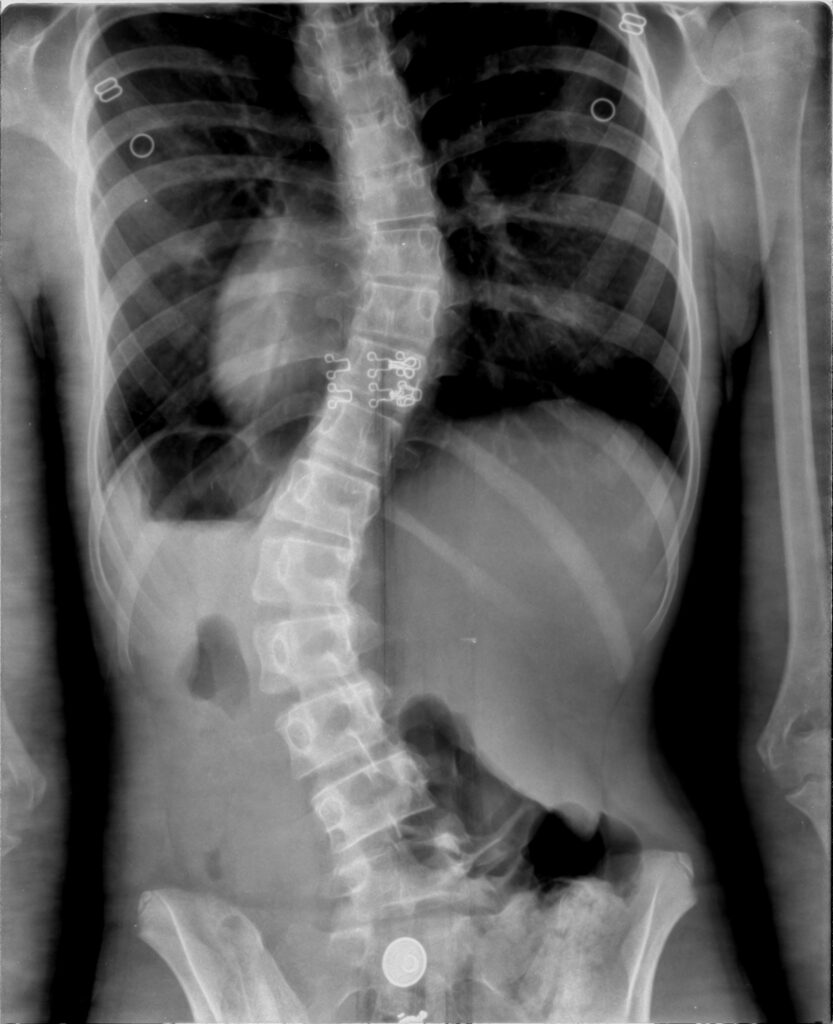Idiopathic Scoliosis
What is idiopathic scoliosis?
Idiopathic scoliosis (IS) is a spinal condition characterized by an abnormal sideways curvature of the spine. The term “idiopathic” means that the cause of the condition is unknown. It is the most common type of scoliosis and typically develops during childhood or adolescence. Understanding the prevalence of idiopathic scoliosis at different ages is essential in recognizing the significance of early detection and intervention. Let’s explore the statistics on the incidence of idiopathic scoliosis by age.
Idiopathic scoliosis is primarily considered a “neuro-hormonal condition” influenced by genetic factors, resulting in a three-dimensional alteration in the alignment of the spine. The primary and most noticeable indication of this condition is the curvature of the spine. As a whole-body condition, treating scoliosis comprehensively becomes crucial. This longstanding challenge has posed significant obstacles for healthcare professionals worldwide throughout history.
Statistics on the Incidence of by Age:
Infantile Idiopathic Scoliosis:
- Incidence: This type is relatively rare, affecting approximately 1 in every 10,000 infants.
- Age Group: This type of scoliosis occurs from birth up to 3 years of age.
Juvenile Idiopathic Scoliosis (JIS):
- Incidence: JIS occurs in approximately 1-3 out of every 1,000 children.
- Age Group: This type of scoliosis typically develops between the ages of 3 and 10.
Adolescent Idiopathic Scoliosis (AIS):
- Incidence: AIS is the most common type, accounting for about 80% of all scoliosis cases.
- Age Group: It usually manifests during puberty, between the ages of 10 and 18, with peak onset around the age of 12-14.
Adult Idiopathic Scoliosis:
- Incidence: While most cases of (IS) are diagnosed during adolescence, some individuals may develop or continue to have scoliosis in adulthood.
- Age Group: Adult idiopathic scoliosis can occur in individuals who have previously been diagnosed with adolescent idiopathic scoliosis, or it can develop de novo (without a previous diagnosis) later in life.
Early Stage Scoliosis Intervention is Key
Understanding the significance of early treatment in idiopathic scoliosis is crucial to ensure the best possible outcomes for your child’s spinal health.
-
Incidence of Idiopathic Scoliosis: IS is the most common type of scoliosis, affecting approximately 2-3% of children in the general population. Timely treatment can help address the spinal curvature and prevent its progression, reducing the need for surgical intervention.
-
Importance of Early Treatment: Early treatment plays a vital role in managing IS. By initiating appropriate interventions as soon as possible, such as bracing, physical therapy, and specialized exercises, you can actively address the spinal curvature and promote spinal stability.
-
Non-Surgical Intervention: Our innovative non-surgical approach is the primary focus of early stage intervention for idiopathic scoliosis. This intervention aims to stabilize the progression of the spinal curvature, improve postural symmetry, and reduce the curve in many cases. By following a comprehensive treatment plan, you can help your child avoid the need for surgical intervention.
-
Surgical Treatment as a Last Resort: While surgery may be necessary for severe cases, early treatment interventions significantly reduce the likelihood of surgical intervention. By taking action early on, you can potentially prevent the progression of the spinal curvature and provide your child with a better chance of avoiding surgery.
-
Comprehensive Approach and Support: In addition to physical treatment, addressing the underlying factors in scoliosis progression is critical to the success of early stage treatment. These underlying factors can also cause emotional and psychological symptoms that need equal attention and support. This is why scoliosis DNA testing, functional medicine, and various kinds of lab testing is important in identifying these underlying scoliosis factors.
Understanding the importance of early stage intervention for idiopathic scoliosis empowers parents to take a proactive role in their child’s scoliosis management. By initiating appropriate treatment promptly and following a comprehensive management plan, you can help your child achieve optimal spinal health and overall well-being, reducing the likelihood of surgical intervention.

